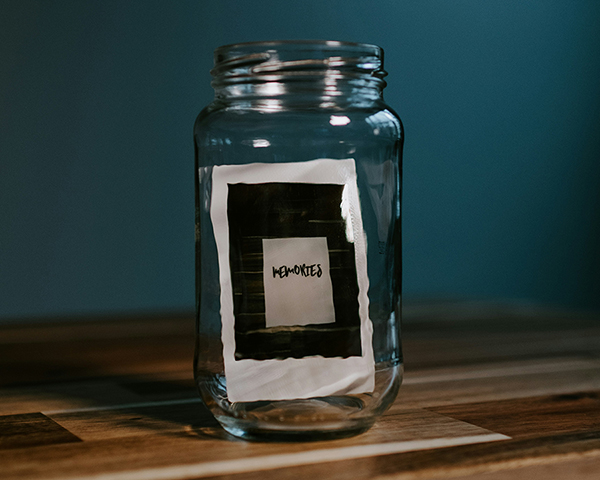Putting yourself first is often equated with selfishness and greed, however, you can put yourself first in your health and wellness and still be compassionate, humble, and generous. In fact, if you are unwilling to put your health and wellness first, you might find that you are unable to show up and give to others.
In a world that profits off your overwhelm, protecting your well-being while staying open-hearted requires intentional practices and boundaries. We are here to help walk you through a few different practices to help you.
Information Boundaries
Curate your media consumption. This doesn't mean ignoring important issues, but being intentional about when, how, and how much difficult content you consume. Consider designating specific times for news consumption rather than allowing it to flow throughout your day. If you're on social media, start to notice which accounts show trauma without warning, sensationalize horrific things, and try to get your angry or afraid... then unfollow those accounts.
Choose quality over quantity. Instead of consuming multiple sources of news that are presenting the same traumatic things, choose one trusted source and limit exposure to graphic details that don't add to your understanding but do add to your distress.
Balance difficult content with uplifting material. For every difficult story you consume, intentionally seek out content about human resilience, positive change, or simple beauty in the world. It's important to see the bigger picture: not everything is on fire—there are good people doing incredible things in the world.
Create device-free zones. Designate certain times or spaces where you disconnect from the constant stream of information and reconnect with your immediate environment and relationships.
Emotional Regulation Practices
Develop a grounding routine. When you feel overwhelmed by others' pain, have go-to practices that help you return to your own body and emotional center. This might include deep breathing, progressive muscle relaxation, sitting in nature, or simply naming five things you can see in your immediate environment.
Create an emotional boundary. Before engaging with difficult content or conversations, visualize creating a protective barrier around your heart that allows compassion to flow out while preventing others' trauma from overwhelming your system.
Use the "compassionate witness" approach. When confronted with others' suffering, practice observing their pain with kindness while maintaining awareness of your own separate emotional state. You can care deeply without merging completely with their experience.
Regular emotional check-ins. Throughout the day, pause to ask yourself: "What am I feeling right now? Is this emotion mine, or have I absorbed it from someone else?" This practice helps you distinguish between your own emotional experiences and those you've taken on from others.
Physical Self-Care as Emotional Protection
Prioritize sleep. Emotional overwhelm often disrupts sleep, but adequate rest is crucial for emotional regulation. Create strong sleep hygiene practices and protect your sleep as a non-negotiable aspect of staying emotionally resilient.
Move your body regularly. Physical movement helps process stress hormones and emotional overwhelm. This doesn't require intense exercise—gentle walking, stretching, or dancing can all help discharge emotional tension.
Nourish yourself well. When we're emotionally overwhelmed, we often neglect basic nutrition, which can make us more vulnerable to emotional dysregulation. Consistent healthy nourishment supports your body's ability to handle stress.
Spend time in nature. Natural environments have been shown to reduce stress hormones and promote emotional regulation. Even brief exposure to nature—watching clouds, touching a tree, listening to birds—can help reset your emotional state.
Social and Community Strategies
Practice selective engagement. You don't have to be equally available to everyone's pain all the time. It's okay to have seasons when you're more or less available for others' emotional needs based on your own capacity.
Learn to offer presence without solutions. Often, our desire to help can lead to taking on others' problems as our own. Practice being a caring witness without feeling responsible for fixing everything you encounter.
Create positive social experiences. Intentionally seek out interactions that nourish rather than drain you. Spend time with people who make you laugh, engage in activities that bring joy, and create experiences that remind you of the beauty and goodness in the world.
Build a support network. Connect with others who understand the challenge of caring in an overwhelming world. Having people who get it can provide both validation and practical strategies for managing empathic overwhelm.
As you honor your emotional reality, know your feelings are valid. It's human to care, and it's easy to get overwhelmed with the state of the world. In the history of being human, we are used to navigating big feelings and tragic events within our tribe, but we were never designed to carry the pain of the whole Earth. Honor your emotional responses while also taking responsibility for managing them in healthy ways.
Maintaining empathy while protecting your well-being also requires cultivating hope and perspective, even in the midst of overwhelming circumstances. For every story of suffering you encounter, remember that humans have an extraordinary capacity for resilience, healing, and growth. Focus on stories of recovery, communities coming together, and people finding meaning in the midst of difficulty.
Even when global problems feel insurmountable, remember that your individual acts of compassion create ripple effects you may never see. The support you offer one person, the kindness you show in daily interactions, and the positive energy you bring to your community all contribute to healing in the world.









